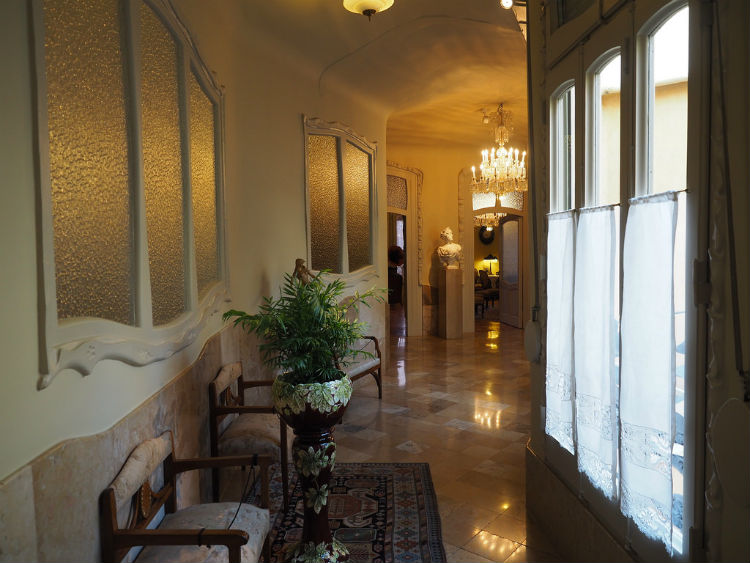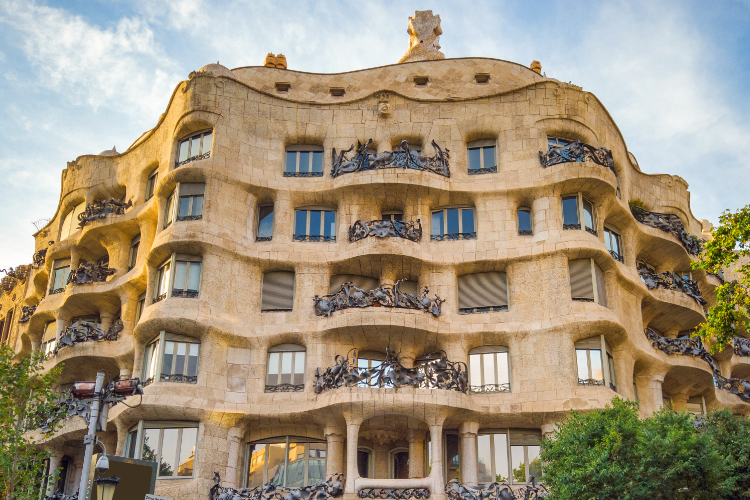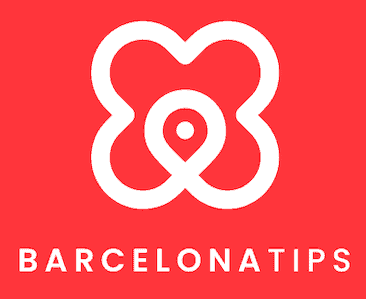Casa Milà, also known as La Pedrera, is one of Antoni Gaudí’s highlights in Barcelona. As far as I’m concerned, fantastic for a visit. In this article, I tell you everything you need to know about Casa Milà to decide for yourself whether or not to visit this landmark during your stay and share what to consider when booking tickets.
| Casa Milà | Tickets, openings hours & public transport |
|---|---|
| Tickets | Tickets €25 Students and people over 65 €19 Children and youth 7-12 jaar €12,50 Children under 7 get in for free |
| Address | Passeig de Gràcia 92 (Eixample) |
| Public transport/ metro | Metro: Passeig de Gràcia (L3 and L5) Buses: V15, V17, H10, H8, 7, 22, 24, 6, 33, 34 |
| Opening hours | Every day: 9.00 AM to 20.30 PM On 1 January, La Pedrera opens at 11am and closes at 8.30pm. Closed: 25 December |
Contents
- What is Casa Milà?
- Practical information
- How do you get to La Pedrera?
- When to visit Casa Milà?
- What can you see and do while visiting La Pedrera?
- Attending a jazz concert at Casa Milà: Nits d’Estiu
- History and architecture of Casa Milà
What is Casa Milà?
Casa Milà is considered a masterpiece by architecture lovers. It is one of two houses Antoni Gaudí shaped along Paseo de Gràcia in Barcelona’s Eixample district. Gaudí built it as an assignment of Pere Milà. The building was long frowned upon (see also the piece below on the history of this residence) by locals, but today it is one of the city’s most famous symbols and a true modernist icon.
The façade is special, but so is definitely the interior. At Casa Milà, you also get a lot of background information about Gaudí. As far as I am concerned, a visit to this work is highly recommended.
If you have limited time in the city and want to see at least the biggest highlights (Sagrada Família, Park Güell and Camp Nou), I understand that you might save a visit to Casa Milà for a next time. But maybe you’ve already seen the inside of the Sagrada Família and just want to experience another of Gaudí’s highlights? And if you are unlucky and it rains heavily during your city break, Casa Milà is a good alternative to Park Güell: the visit takes place mostly inside.
5 reasons to visit La Pedrera
- The spectacular roof terrace
- You will learn extremely much about Gaudí’s techniques and insights
- Casa Milà has featured in at least 15 films that were (partly) shot here
- Fantastic evening experience (more details below)
- Unesco put La Pedrera on the World Heritage List
Practical information
Prices
Adults: €25 for entrance ticket + audio guide.
Children up to 7 years: free
Children 7-12 years: €12
Students: €19 (€6.00 discount)
Over-65s: €19 (discount of €6.00)
Opening hours
Every day: from 9AM to 8.30PM
On 1 January, La Pedrera opens at 11AM and closes at 8.30PM.
Closed: 25 December
Time slot
Note: La Pedrera works with fixed visiting times. That means you need to decide in advance (when booking your tickets) what time you want to visit the highlight. Then make sure you are at the entrance on time too.
How do you get to La Pedrera?
Metro: you can get to Casa Milà very easily by metro. The nearest metro stop is Passeig de Gràcia, where metro lines L2 (purple line), L3 (green line) and L4 (yellow line) stop.
Walking: from the city centre, it’s fine to walk to Casa Milà. You’ll find La Pedrera almost at the top of the chic shopping street Passeig de Gràcia. From Plaça Catalunya, you can walk there in about 15 minutes, at least, if you don’t like shopping, as you’ll walk past beautiful shops and the temptation to take a peek inside will be very strong. Along the way, also look up a lot at the mix of beautiful modernist facades and the modern buildings.
Cycling: cycling to La Pedrera is also easy from the city centre. From Plaça Catalunya, it takes about ten minutes.
Hop-on Hop-off bus: both the northern and southern routes of the Bus Turístic (the blue and red routes) stop right opposite La Pedrera.
When to visit Casa Milà?
If you have the time and are curious about Gaudí’s wonderful world, visit the interior of La Pedrera too. More than other Gaudí houses in the city, La Pedrera can also truly be called a museum.
Casa Milà is quite bulky and while you certainly can’t visit the entire building inside, you will easily spend an hour and a half to two hours there, especially if you want to take time for Espai Gaudí (read more about that below) where you will learn more about Gaudí’s way of working.
Even before La Pedrera opens, there is often a long queue: it’s actually quite busy most of the time. Still, mornings are the quietest, but with the time slot included with your ticket, you never have to queue if you order your ticket online in advance.
In the summer months, it is advisable not to go in the middle of the day as it can be very hot on the rooftop terrace.
There is also an option to visit La Pedrera at night. The colours are very different then and during such an evening visit you can watch an impressive light show on the roof.
What can you see and do while visiting La Pedrera?
To admire the façade, you don’t need an entrance ticket. Still, I definitely recommend a visit to the interior. You get access to one of the nine furnished flats, several exhibition rooms including the Espai Gaudí with a permanent exhibition on the architect’s work, special courtyards and, of course, the spectacular roof with its chimneys and towers.
Façade
The imposing eight-storey building resembles an ascended coral reef from a deep ocean, with balustrades reminiscent of seaweed or perhaps an undulating sandy beach. But Barcelonans quickly nicknamed Gaudí’s mysterious limestone-carved structure La Pedrera, meaning quarry.
Casa Milà’s distinctive façade is made up of large pieces of limestone. These are purely decorative, providing no support for the building itself and being supported, as it were, by the impressive pillars typical of Gaudí. This made it possible to construct as many as 150 windows, allowing an abundance of light into the houses.
Flat
A visit to La Pedrera will give you an insight into how the wealthy bourgeoisie in Barcelona lived in the early 20th century. On the fourth floor, you can visit one of the flats. The interior of this residence is exactly like the houses of the wealthy bourgeoisie at that time. See the different rooms, the furniture used at the time, as well as the ornaments Gaudí applied. Really special to see! Did you know that other flats in the complex are still occupied?
On the fourth floor, you will also find an audiovisual show about Barcelona and the meteoric changes of that time.

Casa Milà’s interior will take you back a hundred years
The patios
At La Pedrera, Gaudí innovated by grouping the small ventilation patios into two large patios, which allow for better lighting and ventilation. The walls of these courtyards are a true spectacle of shapes, light and colours. The colours come from the murals that decorate them, with mainly floral motifs, which we also find on the ceilings and on the side walls of the two entrance halls and main staircase.
Roof terrace
There are no fewer than 30 chimneys and two ventilation towers on Casa Milà’s roof terrace. Here, for example, you can see up close what an absolute master Gaudí was at trencadis. Just look, for example, at the dark green decoration on some of the towers, made from shards of green glass from bottles of cava.
One of the chimneys depicts a heart pointing to Reus, Gaudí’s hometown. On another chimney you will also find a heart and a tear, pointing towards the Sagrada Família. According to experts, the tear represents Gaudí’s sorrow because he knew he would never be able to complete his beloved church himself.
Exhibition space – Espai Gaudí
The ‘Room Gaudí’ is located in the attic, one of the most characteristic spaces of La Pedrera, where laundry and washing lines used to be located with 270 overhead flat-brick arches. This space houses the only exhibition dedicated to Gaudí’s life and work, presenting his creations through models and construction drawings, objects and designs, photographs and videos.
Exhibition space – first floor
In 1992, the first floor was inaugurated as an exhibition space. This was the home of the Milà family, the property’s owners, at the beginning of the last century. The staircase in the vestibule, with the railings worked with twisted iron ribbons, is richly decorated with paintings, reproducing in some places Gaudí’s characteristic trencadís. The exhibitions here are often free to enter.
Café La Pedrera
On the first floor is Café La Pedrera, a beautiful restaurant-café where you can have a coffee even without an entrance ticket. You can also grab a bite to eat here.
Gift Shop
At La Pedrera there is also a souvenir shop with mementos of this striking structure and other works by Gaudí in the city. Also located at La Pedrera is a bookshop specialising in books on Catalan modernism and Gaudí.
Attending a jazz concert at Casa Milà: Nits d’Estiu
During the summer months, the rooftop hosts jazz concerts, which you can enjoy with a glass of cava. While doing so, you can also visit the Espai Gaudí exhibition space.
History and architecture of Casa Milà
Casa Milà was built between 1906 and 1912 on the orders of Pere Milà, a Catalan businessman and husband of the wealthy widow Rosario Segimon i Aryells. There were, of course, immediate whispers in the Barcelona gossip circuit that he only married Segimon for her fortune.
Milà was deeply impressed by the eccentric Casa Batlló, also by Gaudí. Gaudí was given carte blanche and complete creative freedom, but this was soon source of fierce conflict and led to the architect’s departure even before the house was completed.
Criticism versus admiration
Unfortunately, Milà’s admiration for the idiosyncratic architect was not shared by everyone; there was mostly an atmosphere of incomprehension. Consequently, after the completion of La Pedrera in 1912, he was met with a storm of criticism because his strange structure, so misunderstood by the public, would bring down the value of the houses on the luxurious Passeig de Gràcia. La Pedrera was mocked and ridiculed by many. It also proved no easy task to find tenants for the flats. According to the owner, this was because of the awkward round shapes.
The Blessed Virgin Mary
Gaudí himself was out of the picture by then, as he got into an argument with Milà in 1910 over a niche with the Virgin Mary, which the very religious Gaudí wanted to put on the façade of Casa Milà. Religion was not very popular at the time and Milà was not lenient, nothing came of it. Gaudí left the property not to return and lost himself completely in his beloved Sagrada Família.
But after this, Milà refused to pay Gaudí’s fee and Gaudí went to court who, with the help of an interpreter since Gaudí refused to speak in a language other than Catalan, ruled in his favour. As a result, Milà had to take out a mortgage on his Casa Milà to raise the sum of no less than 105,000 pesetas, a fortune at the time.
Casa Milà only regained public favour after it came into the possession of Catalan bank Caixa Catalunya in 1986, which invested 53.5 million euros in La Pedrera. Two years earlier, in 1984, Unesco recognised Casa Milà along with Casa Batlló, La Sagrada Família, Palau Güell and Park Güell as a World Cultural Heritage site.
Which Gaudí house should you visit: Casa Milà or Casa Batlló?
If you want to visit one of the two Gaudí houses on Passeig de Gràcia (i.e. Milà or Batlló), I would recommend going to Milà. Seen from the street, Batlló is a fairy tale in itself (and children in particular often find this house ‘prettier’ than La Pedrera), but as far as I’m concerned, Milà’s interior and roof terrace are just a bit more surprising. Do take plenty of time to see Batlló from the outside.
Did you know that…(some facts about La Pedrera)
- Gaudí, much to señor Milà’s frustration, made some of the rooms so round in shape that you could barely get a decent double bed in them?
- About a million tourists visit La Pedrera every year, most of whom currently come from the United States and China, followed by Italy, United Kingdom and France?
- The director of Star Wars took inspiration for the masks of the Storm Troopers and Darth Vader from chimneys on the roof of Casa Milà?
- Gaudí designed an underground space under Casa Milà, which some consider to be Barcelona’s very first car park.


